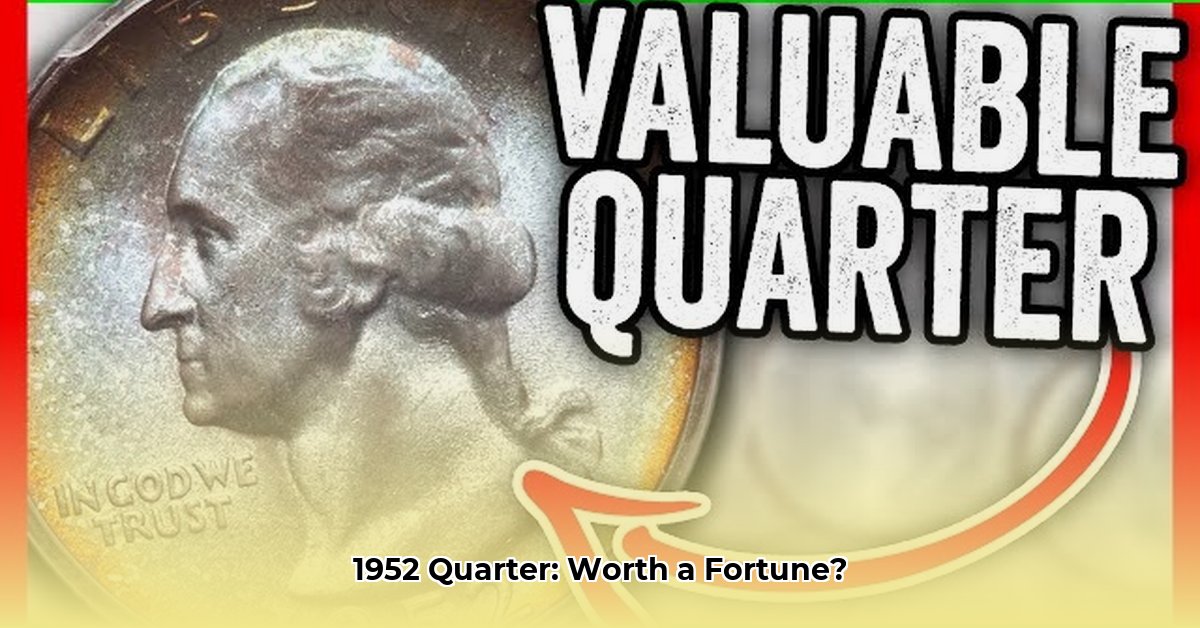
So, you've found a 1952 quarter and want to know its worth? This guide will help you determine its value, covering key factors and offering practical steps. Remember, a 1952 quarter's worth isn't a single number, but rather a result of several interacting factors. For more detailed information, check out this helpful resource.
Understanding the Factors Affecting Value
The value of your 1952 quarter depends primarily on three things: its condition, its mint mark, and its silver content. Let's break each of these down.
Condition: The Most Important Factor
A coin's condition significantly impacts its value. Think of it like a car – a pristine car is worth far more than a wrecked one. We use the Sheldon Scale to grade coins, ranging from 1 (Poor) to 70 (Mint State 70), representing a perfect, uncirculated coin. A coin graded MS60 shows minor wear, while an MS70 is nearly flawless. The higher the grade, the higher the value. Visual references from reputable sources like PCGS or NGC are crucial for accurate grading. A quick online search will show you images of different grade levels to help you understand differences in value.
Mint Mark: P, D, or S?
Your quarter has a tiny letter – the mint mark – indicating where it was made: P (Philadelphia), D (Denver), or S (San Francisco). The 1952-S quarter is especially valuable due to its lower mintage compared to 1952-P or 1952-D. Rarity increases the price.
Silver Content: A Valuable Metal
1952 quarters are 90% silver. The melt value (the value of the silver itself) provides a baseline price, fluctuating with current silver prices. While melt value is a crucial factor, collector value usually surpasses it greatly, especially for well-preserved coins with desirable mint marks.
Steps to Determine Your Quarter's Value
Follow these steps to assess your 1952 quarter's worth:
Grade Your Coin: Carefully examine your quarter and compare it to images of different grades on the Sheldon Scale from reliable sources. Assign a grade, erring on the side of caution if unsure.
Identify the Mint Mark: Locate the mint mark (P, D, or S) to determine its origin.
Calculate Melt Value: Find the current silver price per troy ounce online. Calculate the approximate weight of silver in your quarter (about 6.25 grams) and convert it to troy ounces. Multiply this weight by the current silver price to estimate the melt value.
Consult Online Resources: Use multiple reputable online resources for price guides, such as those offered by PCGS or NGC. Note: valuations can vary widely, so comparative analysis is crucial.
Consider Professional Appraisal: For potentially high-value coins, a professional numismatist's appraisal is vital for an objective valuation. This is especially helpful if you plan to sell your coin.
Understanding the Risks
Several factors can affect the accuracy of your valuation:
| Risk Factor | Likelihood | Impact | Mitigation |
|---|---|---|---|
| Over/Undervaluation | Medium | Moderate | Cross-reference multiple reputable sources; seek professional appraisal |
| Counterfeits | Low | High | Professional authentication is highly recommended. |
| Market Fluctuations | High | High | Monitor silver prices and understand market trends. |
| Damage During Handling/Storage | Medium | Moderate | Use protective cases; handle with care. |
Key Takeaways
- The value of your 1952 quarter depends on its condition (Sheldon Scale), mint mark (P, D, or S), and silver content.
- A 1952-S quarter is typically more valuable due to lower mintage.
- Accurate grading is essential for a reliable valuation.
- Online resources provide guidance, but discrepancies exist; use multiple sources.
- Professional appraisal is recommended for valuable coins.
Remember, this guide provides an estimation. A professional appraisal offers the most accurate and reliable valuation, particularly for coins in excellent condition or bearing a rare mint mark. Happy coin hunting!